Imagine a tool that can translate the complex language of your heart into soul-stirring sounds, transcending the barriers of human communication. Having spent over two decades around music and the marvelous instruments it employs, I’ve found one such enigmatical tool to be the crème de la crème of electric guitar brands – the Harmony electric guitar. This secret weapon in achieving ingenious musical expression constantly reshaped my career and world of music.
Welcome to our comprehensive guide to Harmony Electric Guitars. As we journey together through the illustrious brand history of these exceptional musical instruments, you’ll discover subtle nuances that set Harmony guitars apart, understand the precise craftsmanship involved, and delve into popular models and unique specifications. Our aim is not bet only to enrich your understanding, but also to provide pivotal insights and options should you decide to purchase one. Let’s embark on this melodic exploration.
Harmony: The Brand and History
Harmony: From Past to Present
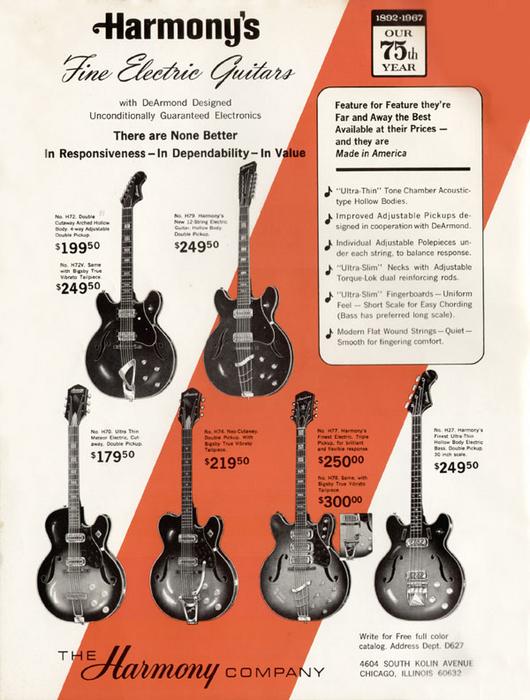
Over the years, Harmony has crafted a name for itself in the world of guitars, a reputation built on a rich background of innovation and steadfast craftsmanship. Having delved deep into Harmony’s guitar history, I am always awed by the progression of guitar design and the substantial legacy left by Harmony.
Harmony started its journey back in the late 1800s, demonstrating great expertise in instrument-making and an unwavering commitment to quality. This foundation has guided Harmony throughout its history, contributing to the generation of models that have graced the hands of various guitar icons and ardent players worldwide.
The transition we can observe from the first Harmony pieces to the present day models is admirable. A Harmony instrument has always stood for something special— a unique blend of vintage and modern, functionality, and style. Over the past century, Harmony has consistently adapted to the ongoing transformations of music trends, ensuring their products are never outdated in look or performance.
Harmony’s guitar designs have also evolved, introducing more sustainable materials, advanced electronics, and ergonomic features, while preserving the brand’s signature sound and visual aesthetics. The pride and trust we can place in Harmony today certainly find their roots in the company’s innovative past.
As we transition into our next section focused on the unparalleled craftsmanship that defines these instruments, let’s keep in mind the foundational history of Harmony. Understanding the brand’s journey gives us a greater appreciation for what makes each Harmony guitar an exemplary piece of musical art.
Craftsmanship of Harmony Guitars
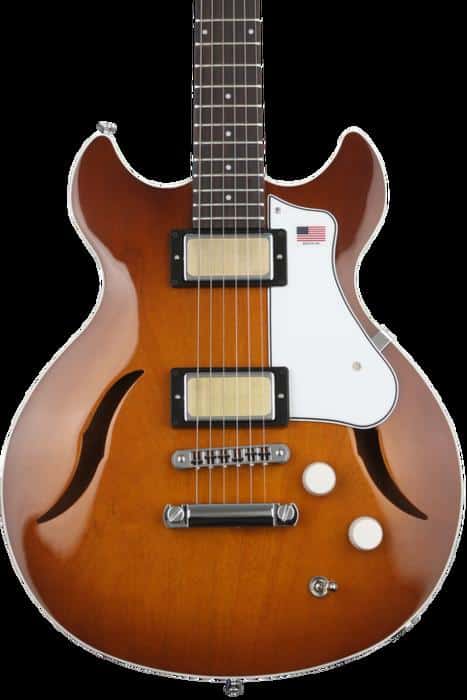
As we tread further into the legacy of Harmony, we stop to examine the very soul of the brand – the craftsmanship of Harmony guitars. Part of the critical music studio equipment for many artists, the build quality of these electric guitars plays a significant role in their enduring popularity. On a personal note, having closely observed the creation process, I can confirm that every Harmony guitar is a testament to artisanal precision. The brands’ commitment to excellence is apparent in each stage of the electric guitar build.
Meticulously constructed by passionate artisans, the signature sound and feel of these instruments stem from a blend of tradition and innovation inherent in the Harmony ethos. The essence of the craftsmanship lies in the details: the unique wood selection, the hand-sanded bodies, the precise fretwork, and the electronic components meticulously wired. Picture the artisans, embracing the nuances of each guitar, infusing them with quality that resonates in every strum.
Each Harmony guitar carries a tale of devotion, the silent affirmation of a brand whose historical importance rests as much on the satisfaction of its customers as it does on the exquisite craftsmanship of its creations.
Popular Harmony Electric Guitar Models
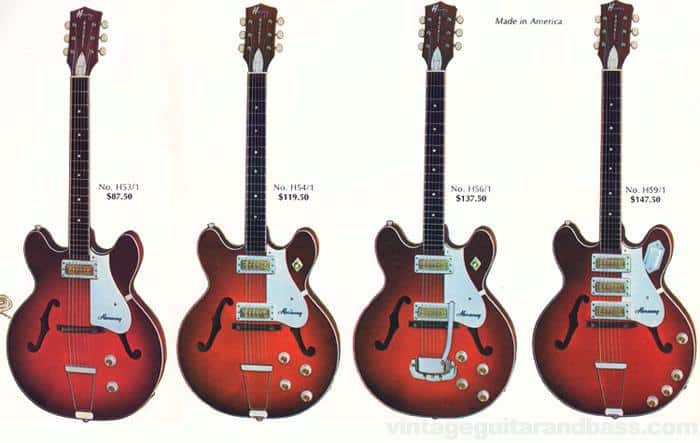
Jumping right into one of the most striking models, the Harmony Jupiter captures hearts – and ears – with its seemingly endless versatility and expansive tonal range. This guitar operates as beautifully in rhythm settings as it does shredding through lead lines, offering dynamically nuanced harmonics and a perky sustain.
Complimenting the Jupiter is the Harmony Rebel. So, what sets the Harmony Jupiter or Harmony Rebel apart from other electric guitars in the market? Quite a lot, actually! The Rebel’s impeccable construction and colourful tone make it an attractive option for guitarists looking for a blend of a vintage look with a contemporary sound. This model, with its dual humbuckers, can produce wicked bluesy or smoky jazz atmospheres while maintaining crystal clear articulation. With the individual toggle switches for pickups, it offers significant tonal variety.
Balancing the vibrant charm of the Jupiter and Rebel is the Harmony Comet. The Comet is a semi-hollow model that stands out for its lush bell-like tones and hearty, resonant lows. With its double-cutaway design, it adds a comfortable playability and contributes a solid aesthetic appeal to the distinct twang.
Regarding Harmony’s reissues, there’s much to appreciate from the Harmony H62 and H72 Reissues. These modern remakes succeed vastly in their aim to reproduce the classic charm that the original models so admirably possessed. Still, they’ve relatively improved on certain technical aspects, resulting in an overall superior playability. The H62 Reissue, for instance, with its genuine carved flame maple body, blends beauty with playability, offering rich, warm tones, whereas the H72 Reissue is an outstanding mix of comfort, style, and dynamic sound.
To me, the allure of these Harmony guitar models goes far beyond their technical superiority. They embody a perfect blend of historical depth, resonating with their designs from the past, and contemporary adaptability. The quality of materials, craftsmanship, and attention to detail is ultimately what sets Harmony apart. From my countless hours experimenting with Harmony guitars, I can attest to the quality these instruments bring to the table.
Whether you’re a rock-loving showman on the hunt for an instrument that can growl and wail, or a sophisticated jazz cat braiding intricate sonic tapestries, Harmony likely has a guitar model that suits your individual needs. By understanding and appreciating the nuances between these popular models, you’ll be in a position to select the most fitting guitar. The journey towards owning and mastering a Harmony guitar promises to be as fulfilling as it is musical.
Unique Specifications of Harmony Electric Guitars
Instrument Types and Their Features

As we progress further into the depths of Harmony’s electric guitars, it doesn’t quite suffice to merely appreciate iconic models such as the Stratotone and Juno series. It’s equally as imperative to dig into the fundamental understanding of the instruments and their diverse features. Believe me, as a die-hard guitarist, it’s the intricate details that truly unlock a guitar’s magic.
Let’s revisit the Stratotone electric guitar
, a crucial part of Harmony’s history. This guitar was revolutionary for its time, introducing an adjustable truss rod for enhanced usability. Besides, its two-deuce pickups contributed to a distinct tone unique to Harmony, a trait still cherished by guitar aficionados.
Fast forward to the present innovation, we have the Juno electric guitar. Its comfortable, compact design makes playability a breeze. And, while seeming compact, it doesn’t compromise on delivering a rich powerful tone, courtesy of the gold foil pickups—a feature I personally found impressive.
Moving to another standout variant among Harmony’s roster – the semi-hollow electric guitars. One cannot simply overlook their significant contribution to Harmony’s iconic sound profile. They strike an incredible balance between resonating hollow tones and solid body sustain, enabling a broad tonal range.
Undeniably, each Harmony guitar, outfitted with unique specifications, brings an essence of individuality to your playing—unearthing nuances you’ve probably never heard in your music before. This personal touch is what distinguishes Harmony, a trait I’ve treasured in my own guitar journey.
After exploring several types and assimilating their features, I’ve grown to understand one thing: these are not just instruments for creating music. They evolve the very way we perceive sound, the way we feel rhythms. And in process, they shape us into better musicians.
Technical Aspects and Setup
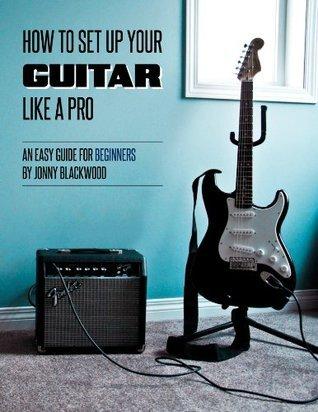
In the realm of Harmony’s unique specifications, understanding the technical aspects, particularly the electric guitar setup, is pivotal for unlocking your instrument’s full potential. From my firsthand setup experiences and collaborations with professional musicians, I’ve discovered how subtle tuning and careful calibration can take your comfort and playability to new levels.
Whether it’s adjusting the action or tweaking the tension of the truss rod, Harmony guitars incorporate innovative design features that provide flexibility in dialing your sound while maintaining consistency. I’ve always admired Harmony’s thoughtful blend of vintage aesthetic appeal with cutting-edge modern functionality in their electric guitar setups, delivering a versatile sound palette that caters to diverse music genres.
With a Harmony electric guitar, expect unmatched tonal versatility, seamless playability, and robust construction that holds up even in demanding gig situations. Delving into these technical intricacies isn’t merely an academic exercise. It’s about discovering your instrument’s unique capabilities and lacing it into your performance, fostering a symbiotic rhythm between musician and instrument.
As we transition into exploring two different types of Harmony’s offerings and their features, remember the nuances of each technical setup that aids in defining their character, making each model distinct.
Purchasing Options and Reviews
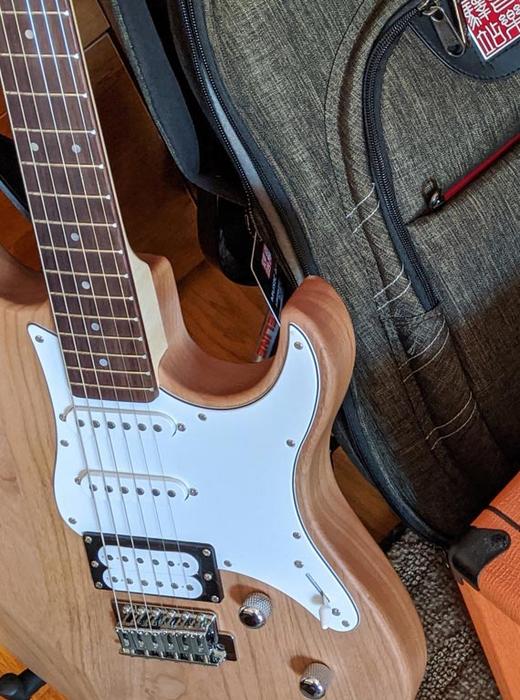
In my two-decade journey across the world of guitars, I’ve seen many brands bloom and wither. Countless Harmony guitar models have passed through my hands and under my scrutiny. As such, I’ve accumulated a wealth of knowledge hard to find elsewhere, which I’m eager to share with you in this guide to effectively buying Harmony guitars.
So, what is the smartest way to purchase Harmony guitars without breaking your bank and ensuring authentic quality? Ah, I bet that question piqued your interest! Let’s unravel it together.
Firstly, nothing beats exploring electric guitar sales at local music stores. I’ve spent countless hours engaging with different guitar models, analysing their build and tone. This tactile experience intensifies your connection with the instrument. Additionally, local stores often give favorable deals and provide appealing warranty services. Also, they offer an opportunity to support local businesses, which is always a win!
But what if you aren’t in the vicinity of any physical music store? No worries, there are many reputable online outlets that cater to all your guitar needs. Trusted platforms like Reverb and Guitar Center offer an extensive range of Harmony electric guitars to choose from.
While exploring these platforms, pay special attention to Harmony guitar reviews. Understanding what other guitarists have experienced with the instrument can significantly facilitate your purchase decision. Be it a praise or complaint about a particular model, the feedback of a fellow guitarist starts a constructive conversation that encourages thoughtful purchases.
Also, joining Harmony guitar forums can be incredibly beneficial. These forums are a treasure trove of wisdom, where veterans, specialists, and enthusiasts convene to share their experiences and knowledge. You’ll get detailed breakdowns of various Harmony models, accurate spec listings, tips on maintenance, and guidance on pricing. Engaging here helps you make informed choices and enriches your guitar purchasing journey.
Needless to say, having a viable guitar buying guide is indispensable. To craft one, start by outlining your budget, listing down the specs that are non-negotiable for you, and identifying the style of music you lean towards. This approach rules out models that don’t align with your requirements.
However, it’s essential to remain open to surprises. Harmony, with its rich history and diverse models, can sometimes inspire you to venture out of your comfort zone. That’s the beauty of these instruments, isn’t it?
So, whether you’re a veteran seeking your next masterpiece or a beginner fancying your first guitar, remember that the stranger then familiar journey starts with the first chord. Armed with these insights and the willingness to explore, you’re all set to embark on the exciting quest of purchasing a Harmony electric guitar.
I hope my recommendations and insights guide you in your search for the perfect Harmony electric guitar. Happy playing!
FAQs
What are Harmony Electric Guitars?
What are some popular Harmony Electric Guitar models?
What are the specifications of Harmony Electric Guitars?
Where can I purchase Harmony Electric Guitars?
Conclusion
As a guitar enthusiast myself, I can affirm that Harmony electric guitars bring a unique blend of vintage charm and modern design to every guitar gear upgrade. And when the right guitar aligns with your style and budget, it can truly elevate your guitar playing experience. Ready to strike the right chord with Harmony’s electric guitar that suits you?
Navigating the world of electric guitar sales can be challenging, but wisdom backed by personal exploration will never fail. Be it a Midnight Blue Electric Guitar, or other iconic models in Harmony’s guitar collection, knowing the specific electric guitar specs is crucial. Having witnessed the seasonal trends and timeless classics, I am here to help guide your electric guitar journey—an informed purchase decision can bring out the best in your musical voice.
Remember, it’s not just about owning a piece of music history, it’s about finding the perfect instrument that resonates with your passion for playing. Taking into account the craftsmanship, technical aspects, and unique specifications of Harmony electric guitars, I’m confident that there’s an instrument out there that will harmonize naturally with your rhythm.
In conclusion, may your journey with Harmony be as thrilling as the winding road that led this legendary brand from past to present. So, let’s strike that chord!